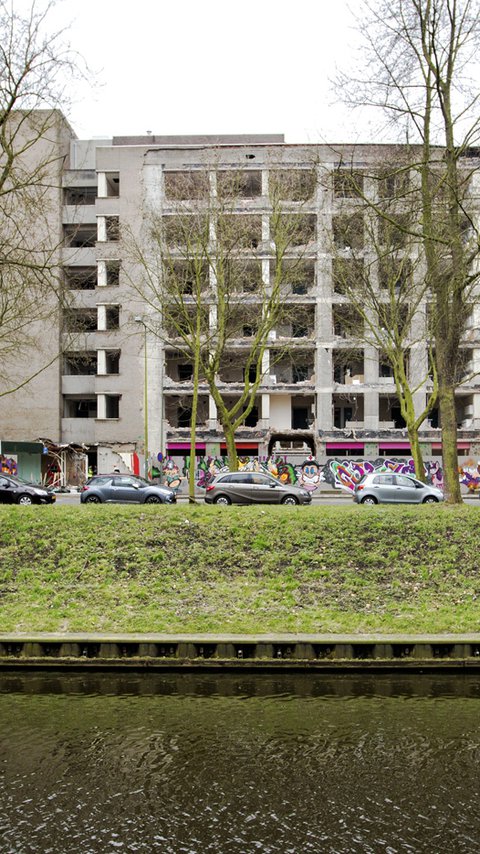
In the city centre of Den Bosch, the former main building of the Groot Ziekengasthuis (GZG) is currently being demolished. 64,000 m2 building from the 1970s are being levelled to the ground and make room for a massive transformation of the GZG site. What about the demolition work? Photographic report: Sandra Peerenboom.
Start
For many years, Bosch people only visited the interior of the GZG: the patient rooms and outpatient clinics. All the outside areas were not accessible. In a few years this will change. With the demolition of the old hospital buildings, GZG (AM and Heijmans) took an important step in November 2014 in the transformation of the GZG terrain into a lively residential, shopping and accommodation area. The monumental buildings on the GZG site are retained and are temporarily 'inhabited' by about 150 entrepreneurs, including designers, artists, architects and hospitality businesses like the Maria Pavilion. There are 90 students housed in the sister flat. It is important for entrepreneurs, residents in the immediate vicinity of the GZG and the traffic to be affected as little as possible by the demolition work.
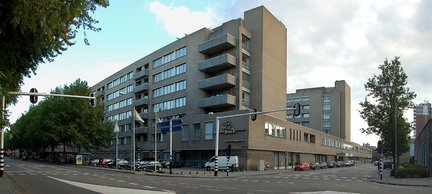
Behind the scenes
Now, three months since the start, you can clearly see the first demolition results. Behind the graffiti decorated fence collaboration with Kings of Colors the beds area of the GZG building was stripped room by room by VSM Demolition works. The outbuildings and extensions in the courtyard have now been demolished and the asbestos will be removed. The latter is a specialist job that takes a lot of time. In removing the roof, additional asbestos was found so 'men in white suits' have to be called in to clean up the asbestos.
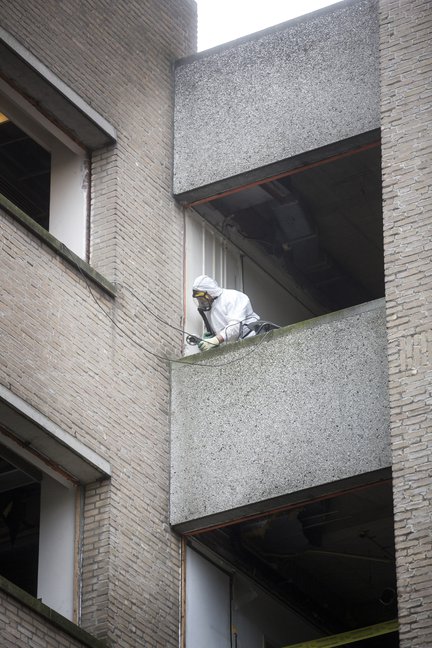
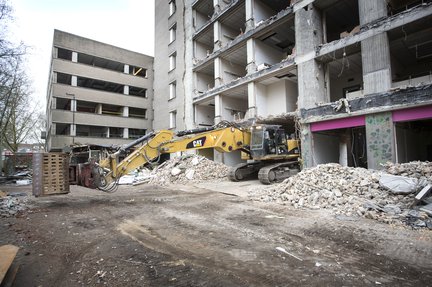
100,000 tons of rubble
The walls and the windows are largely already removed, making the room structure of the old hospital now is clearly visible. From top to bottom, all steel and wooden parts like ceilings, installations, air ducts and dividing walls are being demolished. The building is taken apart little by little, so eventually only the concrete frame will remain. Eventually, specially equipped overhead cranes will cut the concrete to pieces. An area was prepared in the courtyard of the site to separate the debris from wood, steel and other still usable materials. Small carts transport the stuff to the courtyard. These ‘light’ materials are placed into separate containers and are carried away with trucks.
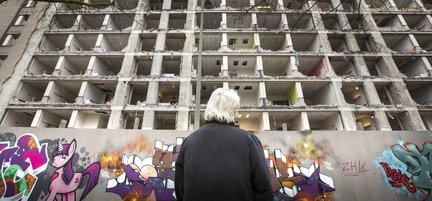
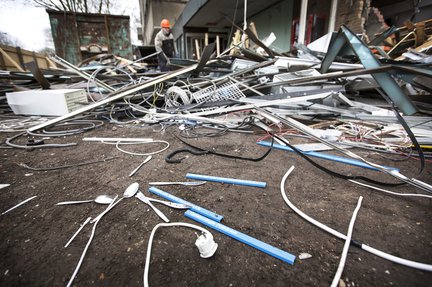
By ship
The mountain of rubble is dispatched by another route. A special rubble bridge is built across the road to the Zuid-Willemsvaart. About 100,000 tons of concrete and brick material are transported to vessels via a conveyor belt. The vessels carry the debris off via the inner city route of the Willemsvaart to the Maas. Thus, the inner-city traffic is not affected by the many trucks that would otherwise have had to drive off and on. Trucks, cars and cyclists can just carry on driving safely under the conveyor belt.
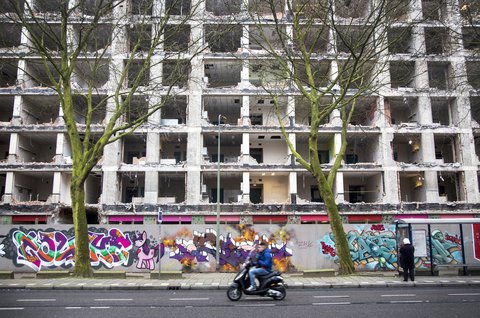
The buildings on the side of the South Willemsvaart are the first to be demolished. The buildings on the Tolbrugstraat are the last in line. These buildings will form a screen against sound and dust in the direction of Tolbrugstraat and Burgemeester Loeffplein to the end. The buildings are demolished down to ground level. The basements of the buildings are retained. The basement deck is demolished and the columns are removed. The remaining bin is used again as a parking garage for future residents of the GZG site. Because a 'dry tub' remains, no piling needs to be vibrated. That saves the residents from noise pollution, prevents damage to the surrounding historical buildings and above all, it is a sustainable solution. The demolition of the former main building is expected to be completed by the end of 2015.
